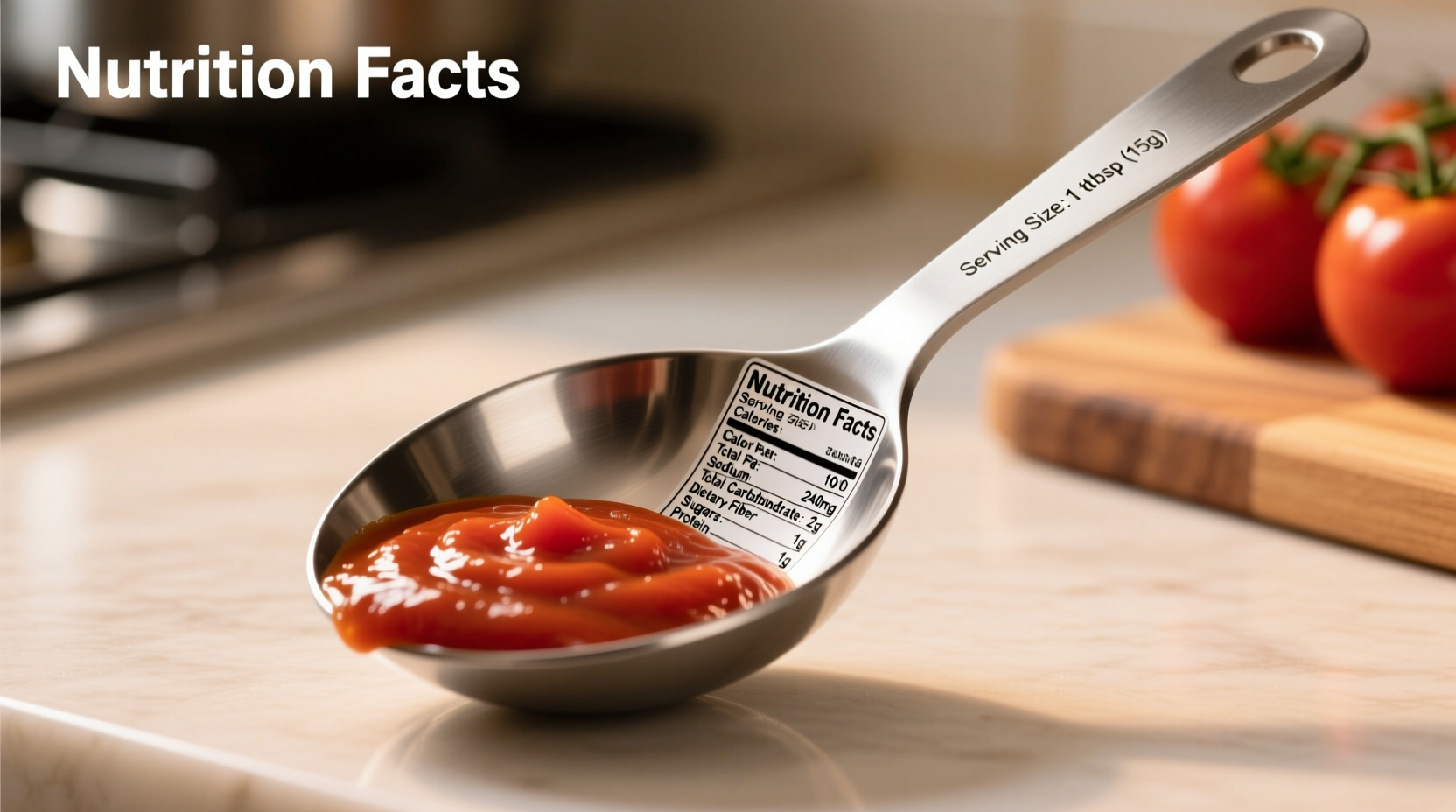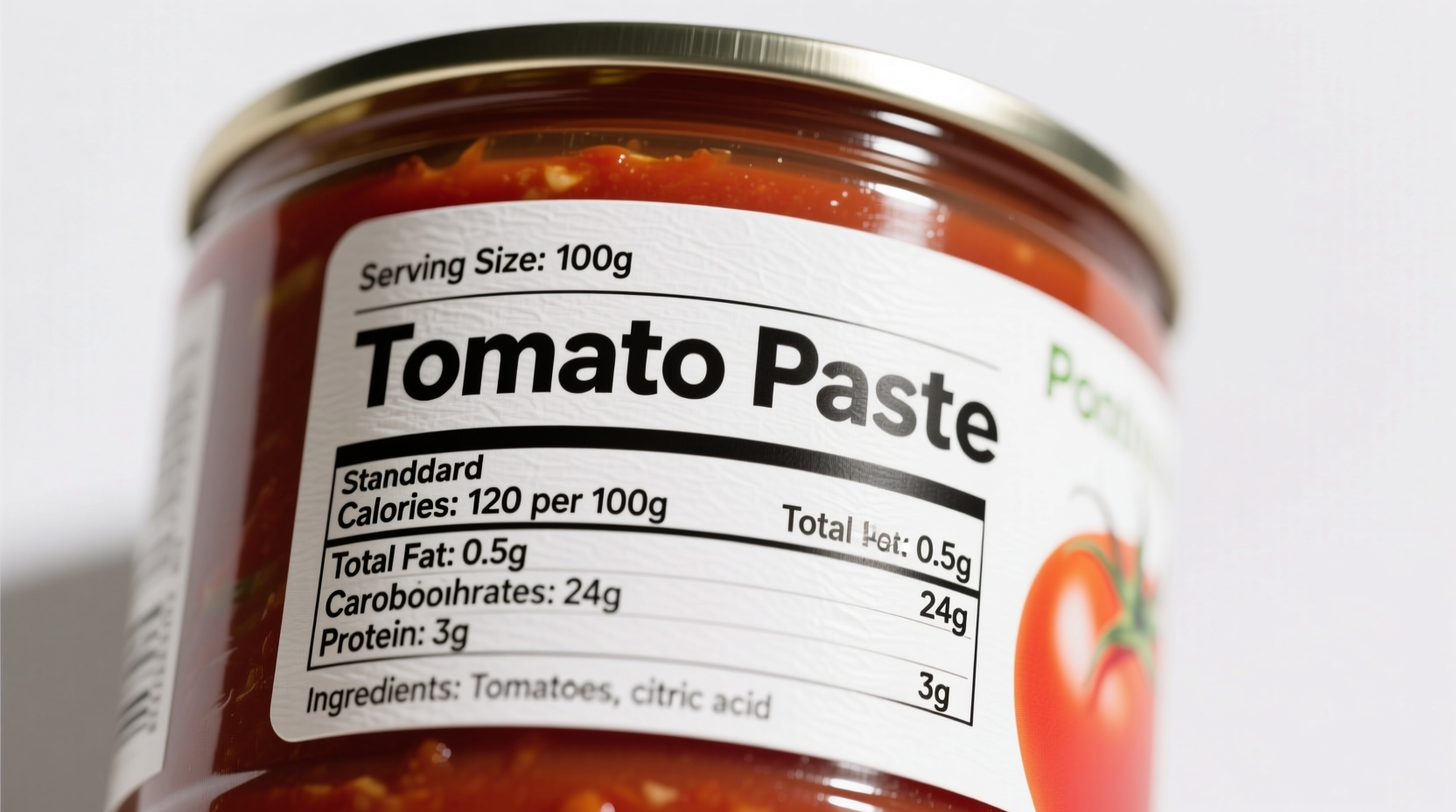Curious about how tomato paste fits into your daily nutrition goals? Whether you're meal prepping, tracking macros, or simply trying to make healthier choices, understanding the exact nutritional profile of this kitchen staple matters. This guide delivers precise, science-backed information about tomato paste calories and how to use this versatile ingredient wisely in your diet.
Tomato Paste Nutrition Basics
Tomato paste isn't just a flavor enhancer—it's a nutrient-dense ingredient with a surprisingly robust nutritional profile. Unlike fresh tomatoes, the cooking and concentration process intensifies both flavor and certain nutrients. According to the USDA FoodData Central database, here's what you get in a standard serving:
| Nutrient | Per 2 Tbsp (36g) | % Daily Value* |
|---|---|---|
| Calories | 44 | 2% |
| Total Fat | 0.4g | 1% |
| Carbohydrates | 9.5g | 3% |
| Dietary Fiber | 2.0g | 7% |
| Sugars | 5.7g | - |
| Protein | 2.2g | 4% |
| Vitamin C | 13.3mg | 15% |
| Lycopene | 14,000mcg | - |
*Percent Daily Values are based on a 2,000 calorie diet. Your daily values may be higher or lower depending on your calorie needs.

Why Serving Size Matters More Than You Think
Many home cooks don't realize that tomato paste comes in various concentrations, which directly impacts calorie density. The standard "double concentrated" version contains about twice the calories per volume compared to single-strength paste. When reading labels, check for these indicators:
- Single concentrate: Approximately 22 calories per tablespoon
- Double concentrate: Approximately 44 calories per 2 tablespoons (most common)
- Triple concentrate: Approximately 66 calories per 2 tablespoons (less common)
The FDA's updated nutrition labeling guidelines now require manufacturers to specify concentration levels, making it easier to compare products accurately.
Tomato Paste vs. Other Tomato Products: Calorie Comparison
Understanding how tomato paste compares to other tomato-based products helps make informed dietary choices. This comparison reveals why paste is often the smart choice for flavor without excess volume:
| Product | Calories per 100g | Water Content | Best For |
|---|---|---|---|
| Tomato paste (double conc.) | 122 | 58% | Rich sauces, stews, concentrated flavor |
| Tomato sauce | 40 | 94% | Pasta dishes, pizza bases |
| Crushed tomatoes | 30 | 95% | Chunky sauces, soups |
| Tomato ketchup | 110 | 70% | Condiments (higher sugar content) |
This data from the USDA Food Composition Database shows that while tomato paste has higher calories per 100g, you typically use much smaller quantities than other tomato products, resulting in lower overall calorie contribution to your dish.
Practical Usage Tips for Calorie-Conscious Cooking
Professional chefs like Antonio Rodriguez recommend these techniques to maximize flavor while managing calorie intake:
- Dilution method: Mix 1 part tomato paste with 2 parts water or broth to create a sauce base with controlled concentration
- Dry roasting: Lightly cook paste in your pan before adding liquids to deepen flavor without extra calories
- Flavor layering: Combine small amounts of paste with fresh tomatoes for complex flavor with moderate calories
- Measurement precision: Use measuring spoons rather than estimating—this prevents accidental overuse
When substituting tomato paste for other tomato products, remember that 2 tablespoons of paste generally equals about 1 cup of crushed tomatoes in recipes. This conversion knowledge helps maintain consistent calorie counts when adapting recipes.
Reading Labels Like a Nutrition Professional
Not all tomato paste products are created equal. Some brands add sugar, oil, or preservatives that significantly alter the nutritional profile. When selecting a product, check for:
- Ingredients list with only "tomatoes" (no added sugar or oil)
- Serving size consistency (should be 2 tablespoons/36g)
- "No salt added" versions if monitoring sodium intake
- Certifications like USDA Organic for pesticide concerns
The USDA Food Composition Database confirms that pure tomato paste without additives maintains the most favorable nutritional profile for health-conscious cooking.
Tomato Paste in Specialized Diets
Tomato paste fits well within various dietary approaches, but with important considerations:
- Keto diets: At 2.6g net carbs per tablespoon, use sparingly to stay within limits
- Low-FODMAP: Generally safe in 2-tablespoon servings according to Monash University guidelines
- Heart-healthy diets: The lycopene content (14,000mcg per serving) supports cardiovascular health
- Weight management: Provides volume and flavor with minimal calories when used properly
Registered dietitians note that the cooking process actually increases lycopene bioavailability by up to 35% compared to raw tomatoes, making tomato paste a nutritional powerhouse despite its concentrated nature.











 浙公网安备
33010002000092号
浙公网安备
33010002000092号 浙B2-20120091-4
浙B2-20120091-4